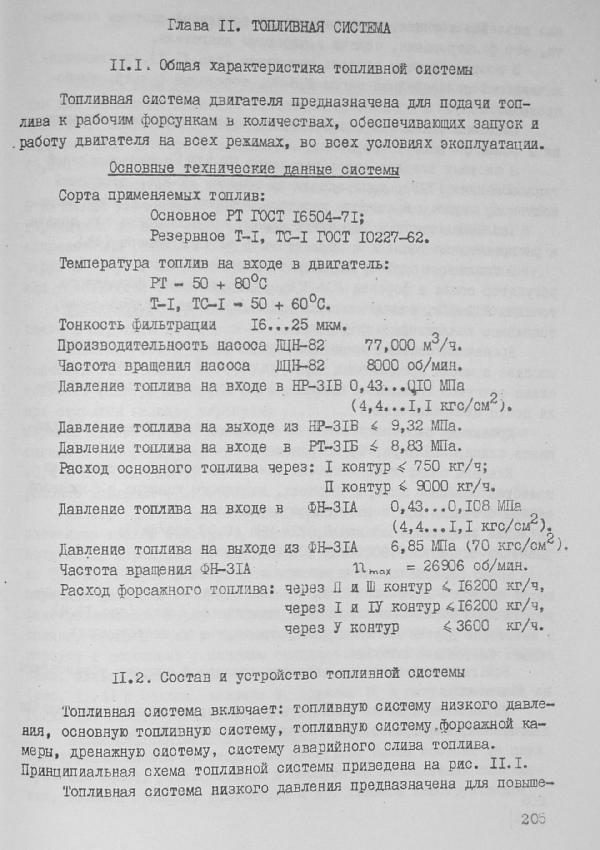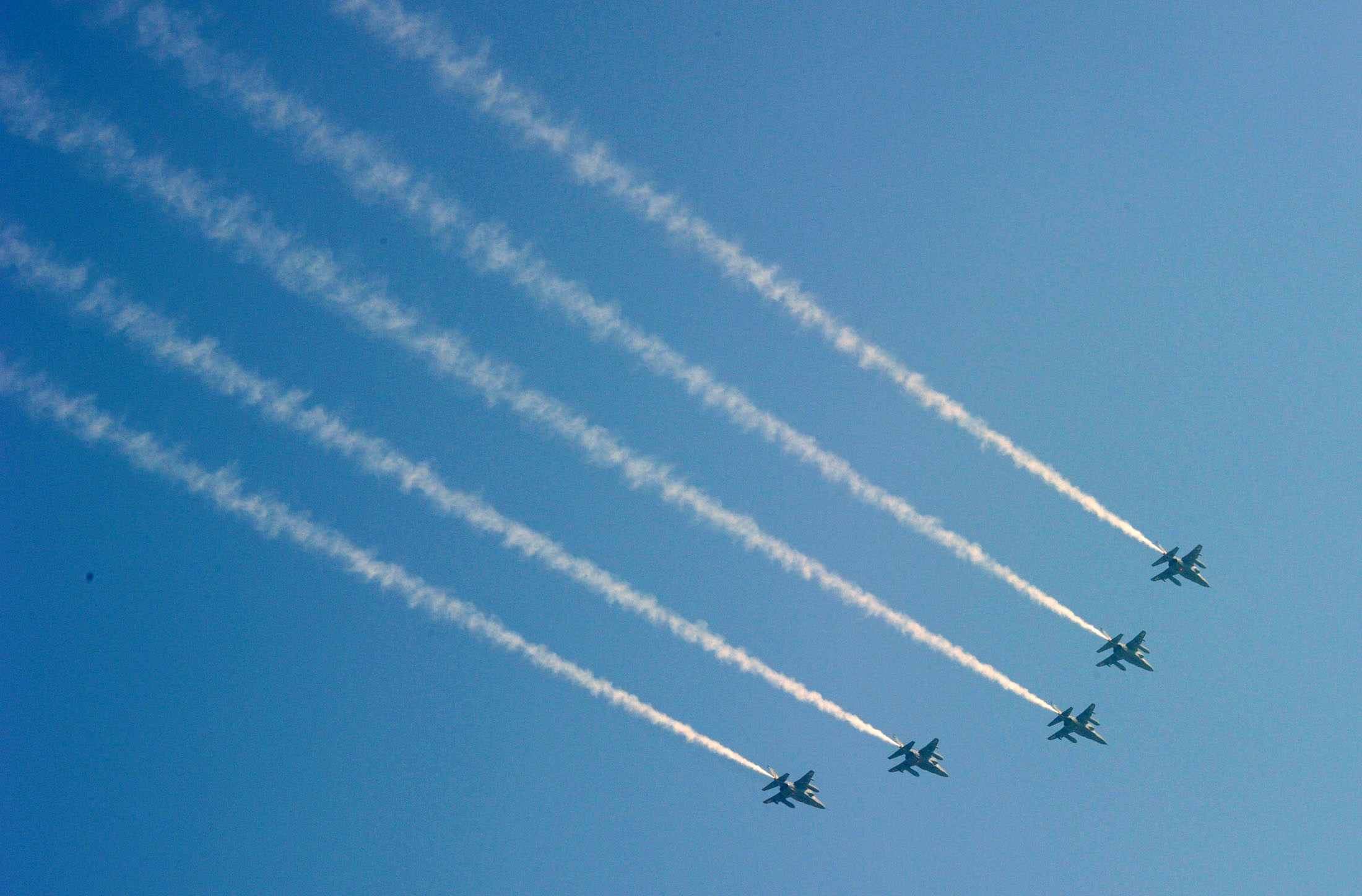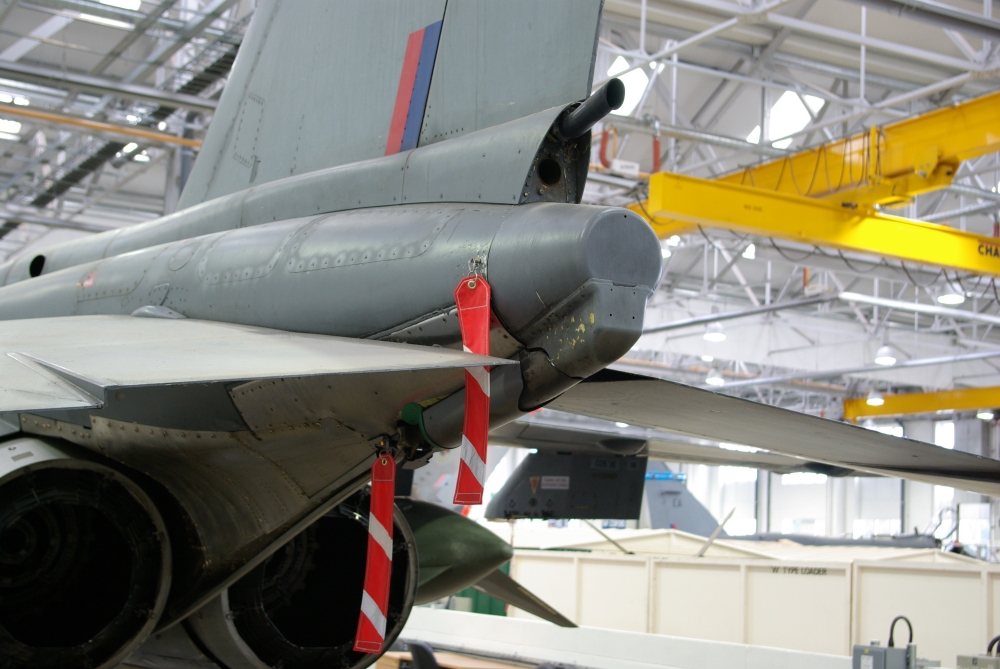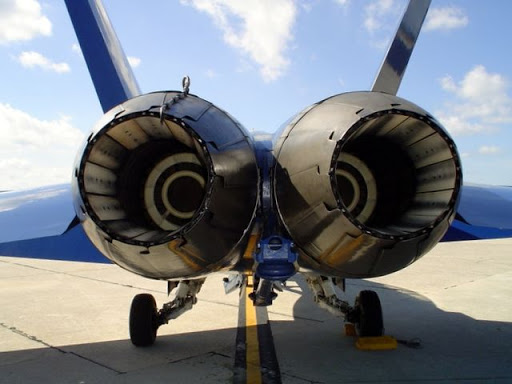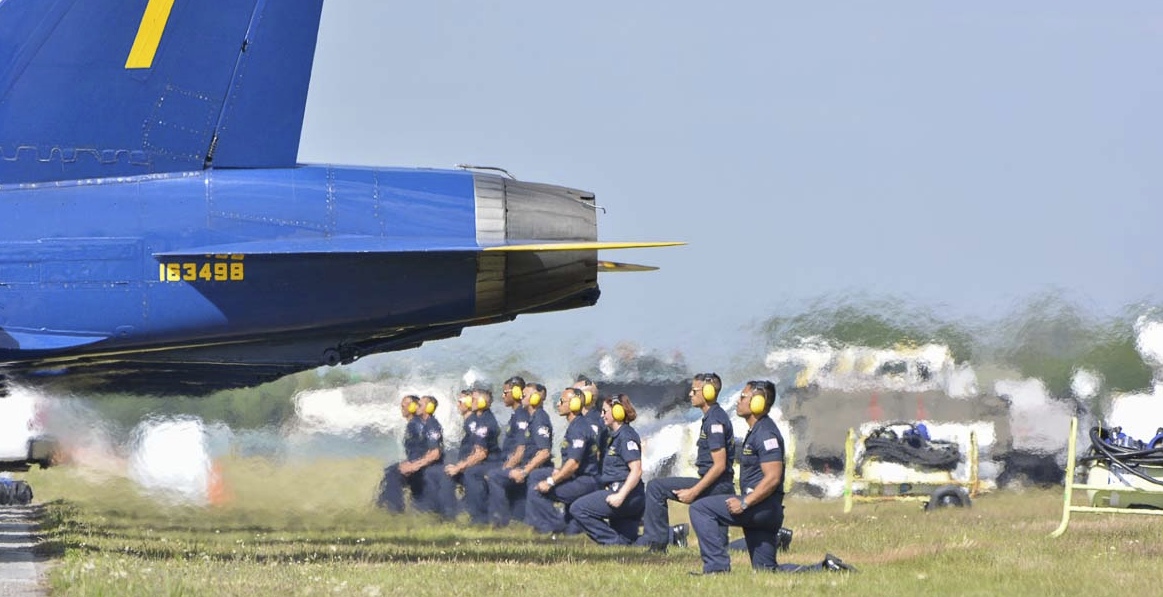This video of four jets flying in formation proports to show some kind of "chemtrail" because what looks like a contrail starts and stops on two of the jets, but not the other two, and the on/off is at different times for each jet. This video was repurposed for a chemtrail video titled "ChemTrails 100% NOT DEBUNKABLE! I Challenge Pilots and DeBunkers to TRY to Discredit This Video!"
What's particularly interesting is that there's a gap between the engine and the trail, something that you normally only see with a contrail (as a contrail starts out as invisible water vapor). This gap initially led me to think it actually was a contrail, and the on/off was to something to do with power settings.
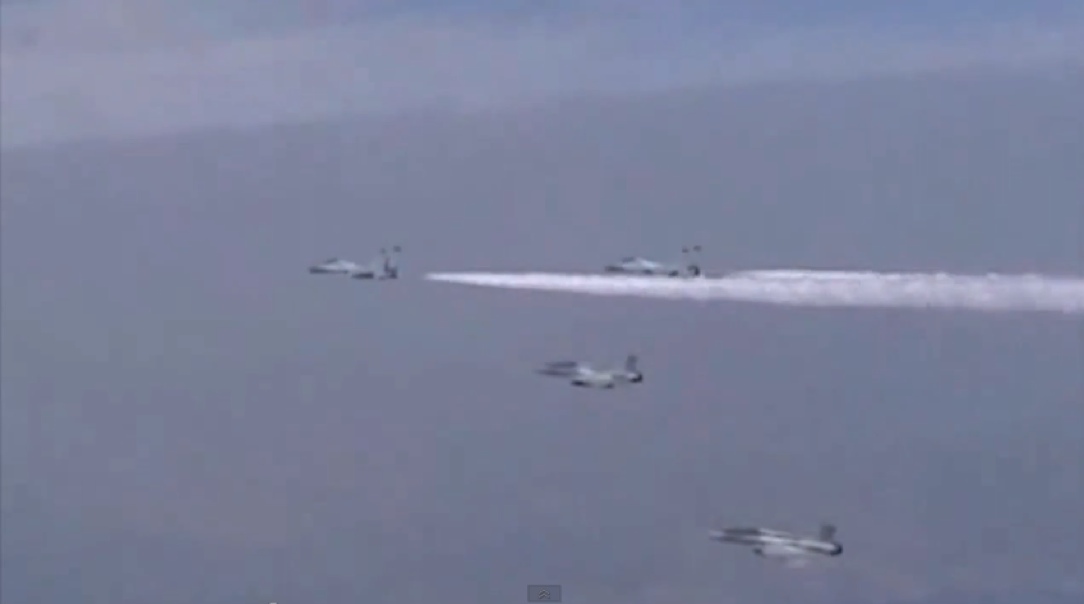
Luckily the video description gives the original source, "IAF SU 30K and French Mirages French India Air Exercise Garuda". (IAF is the Indian Air Force). This identifies the flight as part of a military exercise, and the twin-engined planes leaving the trails as Russian-made Sukhoi SU-30MIK jet fighters.
What we are actually seeing here is what has been described as the "party trick" of the SU-30, the ability to inject unburnt fuel into the exhaust plume via the afterburner system. The super hot air of the exhaust instantly evaporates the volatile fuel, and then when it mixes with the cold air behind the plane the fuel reforms as a fine mist, essentially a fuel smoke cloud. Because the jet engine exhaust is so hot and so fast, you get this noticeable gap while the fuel is in gaseous form.
The following video shows this in close-up at 1:370
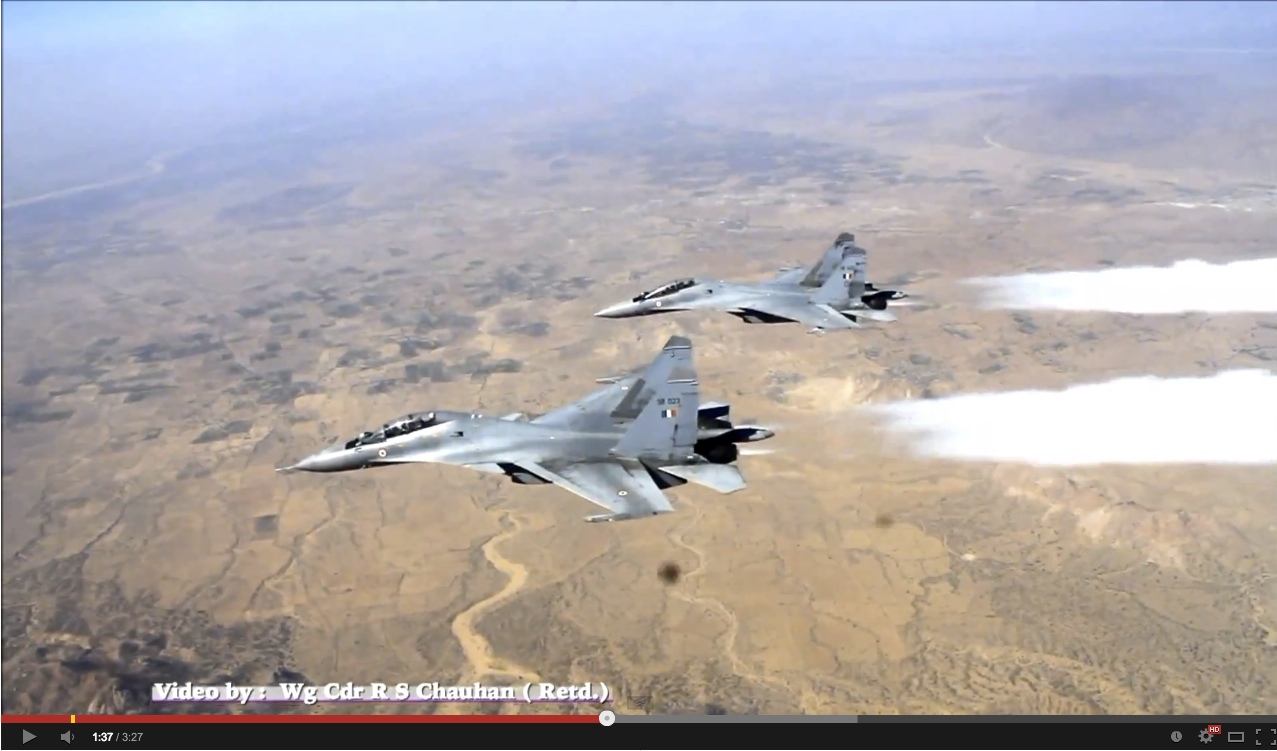
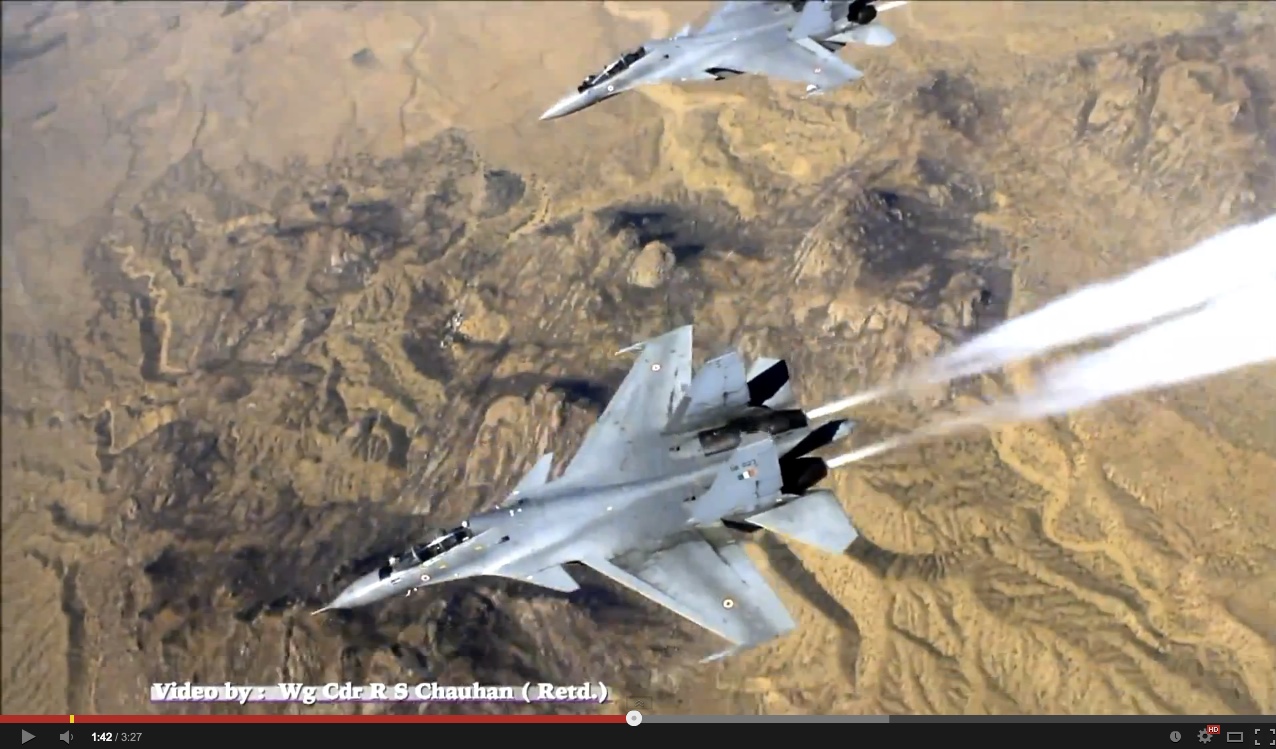
The above photos show the initial narrow stream of liquid fuel right at the engine, then a transparent gap as the fuel is evaporated into invisible gas, and then the smoke trail formed by the fuel recondensing into liquid form again (as a fog of microscopic fuel drops that refract the light, like the water drops in a cloud do).
This is essentially the same technique used by skywriters. In normal sky-writing however, the plane is a prop plane, and the smoke comes out of the engine exhaust and has already started to condense, so you don't see the gap. Sky-writers generally use some kind of specific smoke oil for the purpose, like the one shown below (Hydrotreated Middle Distillate, aka Gasoil, aka C12-20 Isoparaffin). Pure kerosene (or a simple 50/50 kerosene/diesel mix) can also be used to make smoke, but would not be safe to use in a small plane, especially as the exhaust is usually at the front of the plane.

Here's a small plane with the smoke coming directly from the engine exhaust.
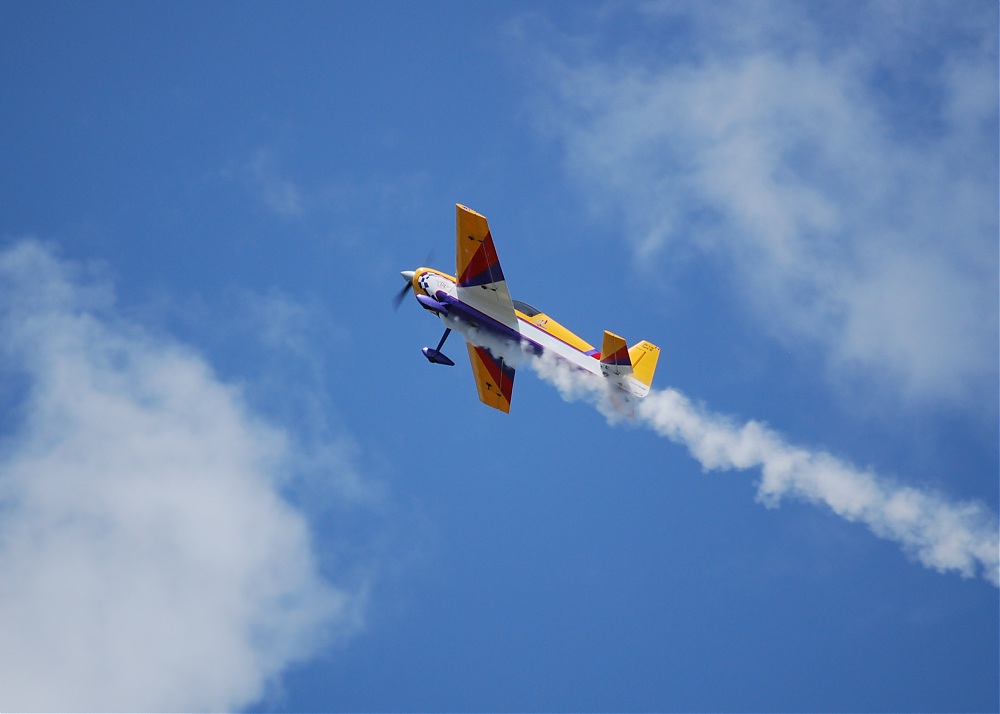
And here's a jet engined plane (Soko G-2 Galeb) with the smoke fuel being directly sprayed into the exhaust gasses. Notice it's initially a thin visible stream (as it's liquid) and then it rapidly evaporates. Here they can use pure kerosene (jet fuel) to create the smoke, or possible a 50/50 mix of kerosene and diesel.
http://achtungskyhawk.wordpress.com...tional-airshow-varazdin-11-12-07-2009-part-1/
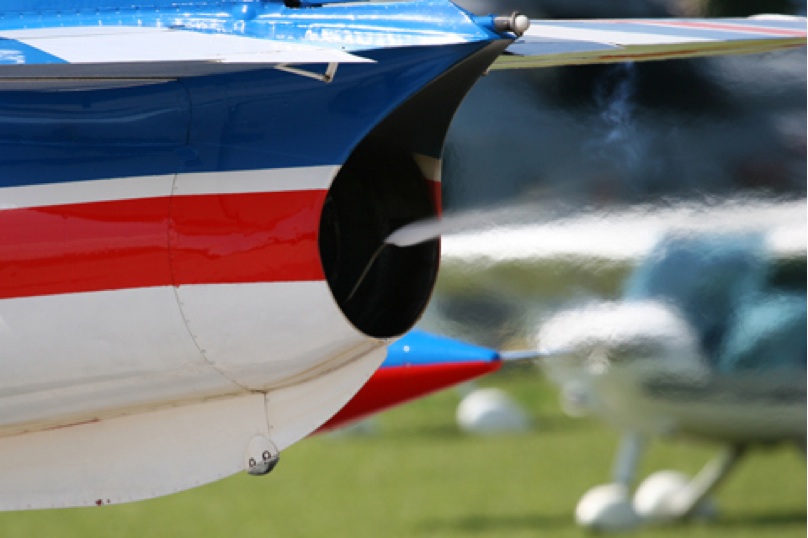
Here's a photo the the G2, with the smoke trails, with gap. If you click on the image for the full size version, you can see the smoke fuel outlet, and the initial narrow spray of liquid fuel.
http://www.airliners.net/photo/STARS-Aerobatic-Team/Soko-G-2-Galeb/1367762/L/
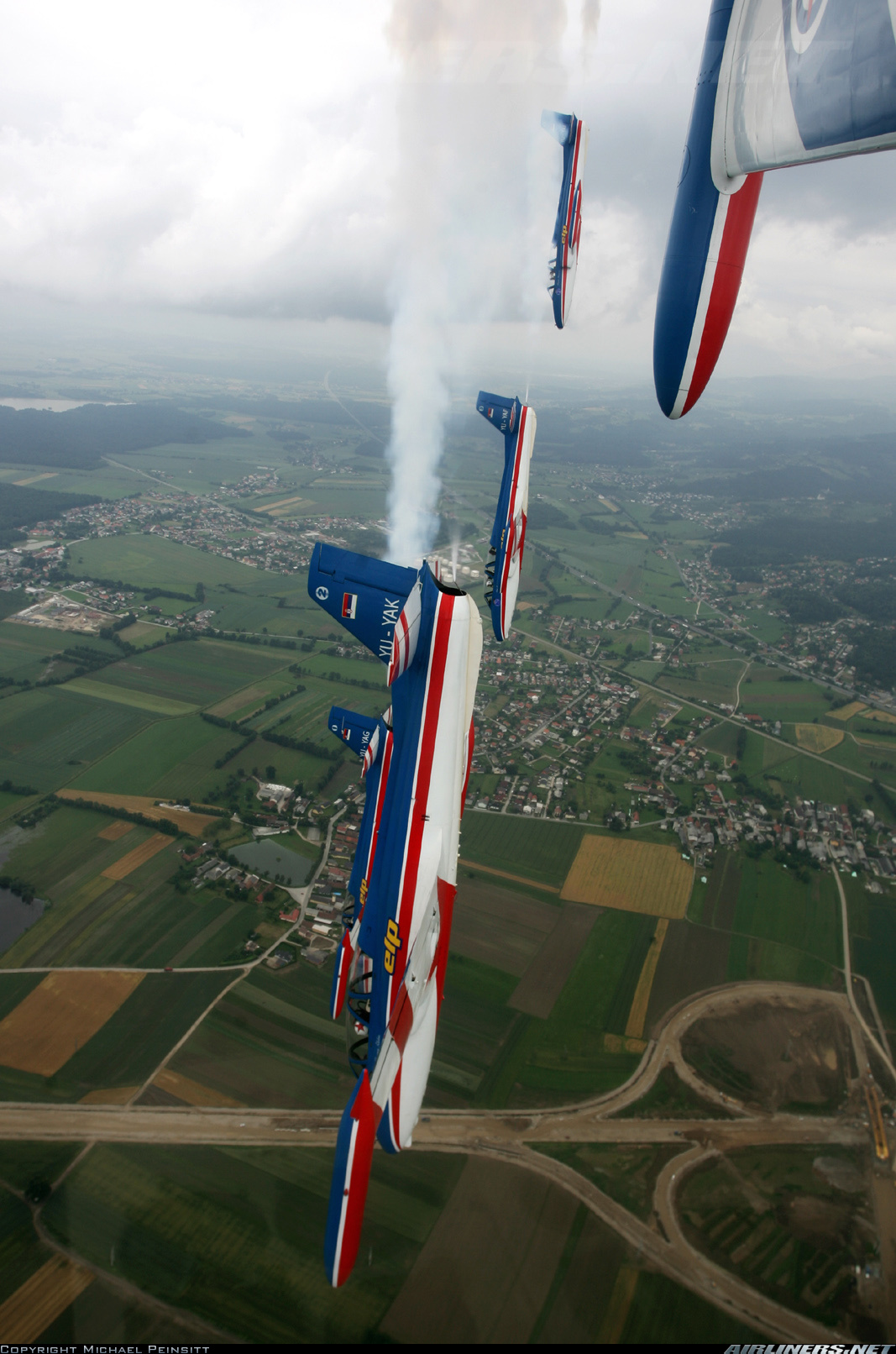
The twin engined SU-30 from the original video is largely unique to the Indian Air Force, and regularly features in a flyover at the annual Republic Day Parade. Here you can see three SU-30s leaving the smoke trails just about 1,000 feet above the ground in hot New Delhi, so they are obviously not contrails, and you can see the distinctive gap.

And here (below) is a close-up of those same three planes. You can see the gap, and also quite a bit of variation, which will be to do with power settings and the flow of the unburnt smoke fuel.
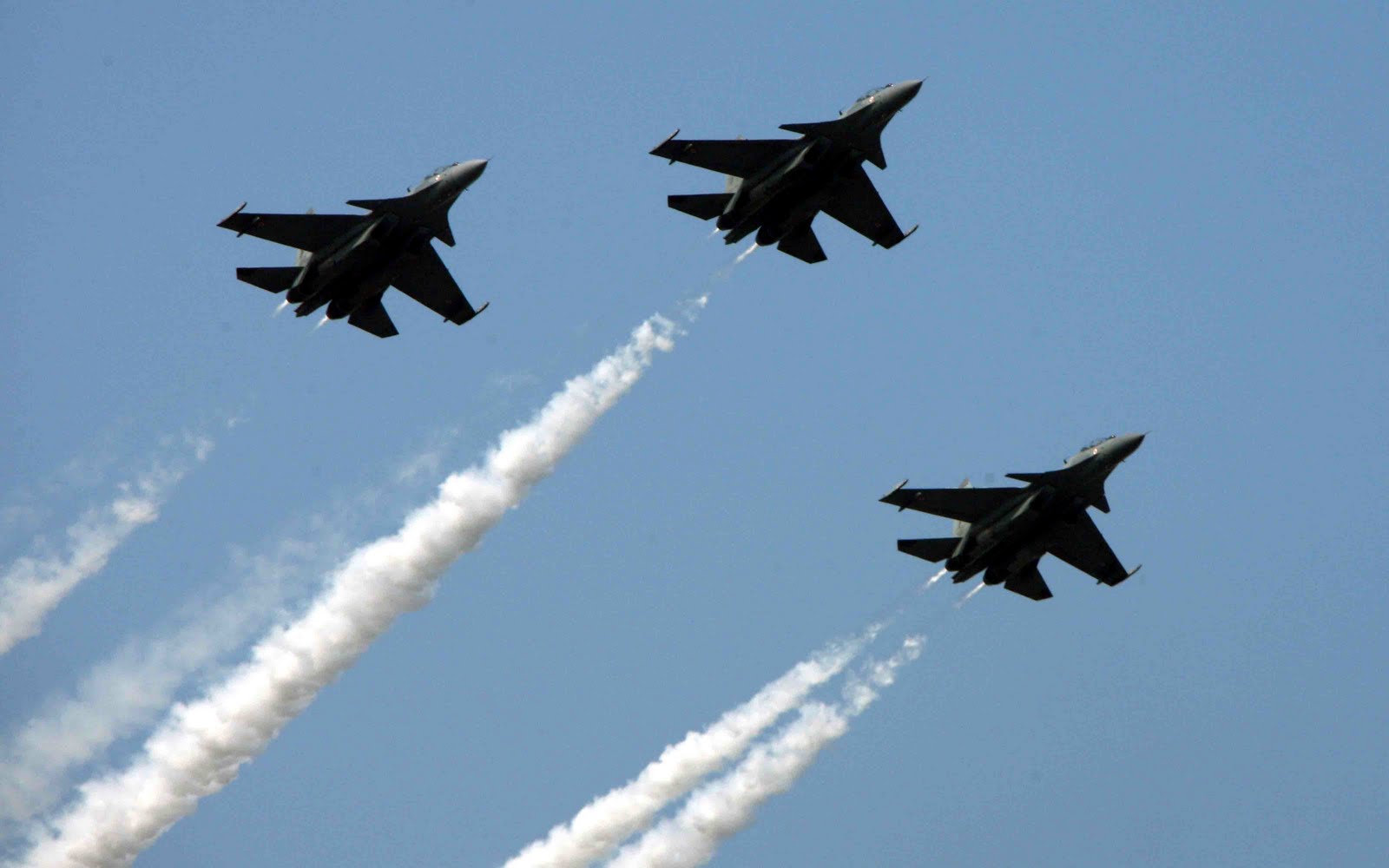
What's interesting is that the gap only exists when pure fuel is used to create a white trail. The addition of other chemicals to create color means that the trail is visible instantly on exit from the engine. SU-30's don't seem to make colored trails, but here are some more Indian jets, showing the gap with the pure white smoke, and no gap with colored smoke.
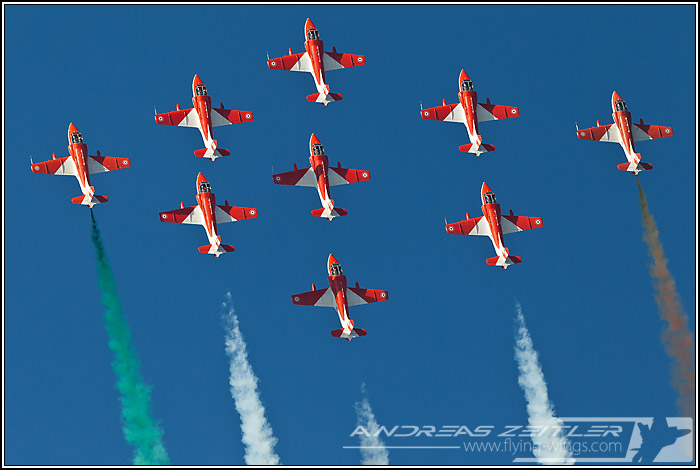
(Thanks to @TWCobra, @Trigger Hippie, and others for helping me track down these photos and info.
What's particularly interesting is that there's a gap between the engine and the trail, something that you normally only see with a contrail (as a contrail starts out as invisible water vapor). This gap initially led me to think it actually was a contrail, and the on/off was to something to do with power settings.

Luckily the video description gives the original source, "IAF SU 30K and French Mirages French India Air Exercise Garuda". (IAF is the Indian Air Force). This identifies the flight as part of a military exercise, and the twin-engined planes leaving the trails as Russian-made Sukhoi SU-30MIK jet fighters.
What we are actually seeing here is what has been described as the "party trick" of the SU-30, the ability to inject unburnt fuel into the exhaust plume via the afterburner system. The super hot air of the exhaust instantly evaporates the volatile fuel, and then when it mixes with the cold air behind the plane the fuel reforms as a fine mist, essentially a fuel smoke cloud. Because the jet engine exhaust is so hot and so fast, you get this noticeable gap while the fuel is in gaseous form.
The following video shows this in close-up at 1:370


The above photos show the initial narrow stream of liquid fuel right at the engine, then a transparent gap as the fuel is evaporated into invisible gas, and then the smoke trail formed by the fuel recondensing into liquid form again (as a fog of microscopic fuel drops that refract the light, like the water drops in a cloud do).
This is essentially the same technique used by skywriters. In normal sky-writing however, the plane is a prop plane, and the smoke comes out of the engine exhaust and has already started to condense, so you don't see the gap. Sky-writers generally use some kind of specific smoke oil for the purpose, like the one shown below (Hydrotreated Middle Distillate, aka Gasoil, aka C12-20 Isoparaffin). Pure kerosene (or a simple 50/50 kerosene/diesel mix) can also be used to make smoke, but would not be safe to use in a small plane, especially as the exhaust is usually at the front of the plane.

Here's a small plane with the smoke coming directly from the engine exhaust.

And here's a jet engined plane (Soko G-2 Galeb) with the smoke fuel being directly sprayed into the exhaust gasses. Notice it's initially a thin visible stream (as it's liquid) and then it rapidly evaporates. Here they can use pure kerosene (jet fuel) to create the smoke, or possible a 50/50 mix of kerosene and diesel.
http://achtungskyhawk.wordpress.com...tional-airshow-varazdin-11-12-07-2009-part-1/

Here's a photo the the G2, with the smoke trails, with gap. If you click on the image for the full size version, you can see the smoke fuel outlet, and the initial narrow spray of liquid fuel.
http://www.airliners.net/photo/STARS-Aerobatic-Team/Soko-G-2-Galeb/1367762/L/

The twin engined SU-30 from the original video is largely unique to the Indian Air Force, and regularly features in a flyover at the annual Republic Day Parade. Here you can see three SU-30s leaving the smoke trails just about 1,000 feet above the ground in hot New Delhi, so they are obviously not contrails, and you can see the distinctive gap.

And here (below) is a close-up of those same three planes. You can see the gap, and also quite a bit of variation, which will be to do with power settings and the flow of the unburnt smoke fuel.

What's interesting is that the gap only exists when pure fuel is used to create a white trail. The addition of other chemicals to create color means that the trail is visible instantly on exit from the engine. SU-30's don't seem to make colored trails, but here are some more Indian jets, showing the gap with the pure white smoke, and no gap with colored smoke.

(Thanks to @TWCobra, @Trigger Hippie, and others for helping me track down these photos and info.
Attachments
Last edited:

